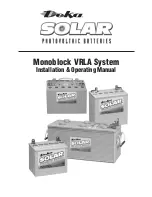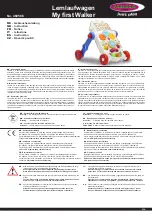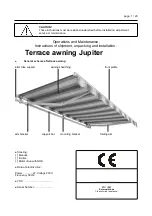
3
Equalize
continued
Charge Controller/Inverter charge setting recommendations
are detailed in System Operation section of this manual. A
voltage range is provided because of equipment setting
availability/limitations, however for optimal charge per-
formance all setting should be at the highest setting of the
battery range that the charge controller/inverter can handle.
Maintenance
IEEE (Institute of Electrical and Electronics Engineers) suggests
batteries be checked on a monthly, quarterly and yearly basis.
Each time period requires different checks. A maintenance log
should be initiated at the time of installation.
Typical checks consist of voltage, specific gravity (not
required for VRLA) and visual inspections. Periodic verifica-
tion of voltages will ensure battery is being fully charged and
operating properly. If any conditions are found that are out of
specifications, corrections should be made.
A good battery maintenance program is necessary to protect
life expectancy and capacity of the battery.
Reference IEEE
450 for Flooded batteries and IEEE 1188 for VRLA (Valve
Regulated Lead-Acid) batteries.
BATTERY LOCATION
When planning a battery system the following requirements
should be considered:
• Space
• Floor Preparation
• Battery Racking System
• Ventilation
• Environment
• Operating Equipment
Space
It is recommended that aisle space be provided in front of all
battery racks be a minimum of 36.0" (915mm). The design
should meet all applicable local, state and federal codes and
regulations.
Floor Preparation
It is recommended to consult with a structural engineer to
determine if the existing floor will withstand the weight of the
battery and the battery racking system. The floors in which the
battery will be located should have an acid-resistant coating.
Any battery spills should be neutralized with non-corrosive,
water based neutralizing chemical (ex: baking soda/water
solution) that is user safe and environmentally compliant.
The area should always be washed with clean water to remove
any acid neutralizing chemical residue.
Battery Racking System
The battery should not be installed directly on a floor. There
should be some type of barrier/racking between the floor and
the batteries. This barrier/racking should be sufficient to handle
the weight of the battery. The battery racking system must be
suitably insulated to prevent sparking and eliminate any
grounding paths.
Battery Racking System
continued
Adequate space and accessibility for taking individual battery or
cell voltage, hydrometer readings and adding water should be
considered. If installed in an earthquake seismic zone, battery
racking system must be of sufficient strength and adequately
anchored to the floor. Battery rack design and anchoring should
be reviewed by a structural engineer.
Ventilation
It is the responsibility of the installer to provide detailed
methods or engineering design required by Federal, State
and local regulations to maintain safe levels of hydrogen in
battery rooms/enclosures.
The rate of hydrogen evolution is highest when the battery is
on charge. Explosive mixtures of hydrogen in air are present
when the hydrogen concentration is greater than or equal to
4% by volume. To provide a margin of safety, battery
room/enclosure must be ventilated to limit the accumulation of
hydrogen gas under all anticipated conditions. This margin of
safety is regulated by Federal, State and Local codes and is
typically limited to 1% to 2% by volume of the battery
room/enclosure.
Consult all applicable codes to determine specific margin of
safety. Hydrogen gas calculations can be determined by using
proper formulas.
Hydrogen gas is lighter than air and will accumulate, creating
pockets of gas in the ceiling. The ventilation system should be
designed to account for and eliminate this situation. Ventilation
system must be designed to vent to the outside atmosphere by
either natural or mechanical means in order to eliminate the
hydrogen from the battery room/enclosure.
Environment
Batteries should be located in a clean, cool and dry place and
isolated from outside elements. The selected area should be free
of any water, oil and dirt from accumulating on the batteries.
Operating Equipment
Battery systems are sized based on a specific load (Amps
or Watts) for a specific run time to a specific end voltage.
Battery performance is based on these values, as measured
at the battery terminals.
For proper operation of the battery system the following should
be considered:
• Distance between battery system and operating systems
should be kept at the shortest distant possible
• Cables are to be of proper gauge to handle system loads
and minimize voltage drops.
• All cable lengths from battery system to operating system
should be of the same wire gauge and length.
The above is to ensure the battery cable used will be able to
carry the charge/discharge current & minimize the voltage drop
between equipment.
Electrical equipment should not be installed above the batteries,
because of the possibility of corrosive fumes being released
from the battery(s).
Summary of Contents for SOLAR Monoblock VRLA System
Page 1: ...Monoblock VRLA System Installation Operating Manual ...
Page 12: ...10 APPENDIX B Example of typical 3 stage charger ...
Page 13: ...11 APPENDIX C Depth of Discharge vs Freezing Point ...
Page 14: ...12 APPENDIX D Capacity vs Operating Temperature ...
Page 16: ...14 APPENDIX F Charging Current vs Charging Time chart Discharge Voltage Curve ...
Page 17: ...APPENDIX G ...




































